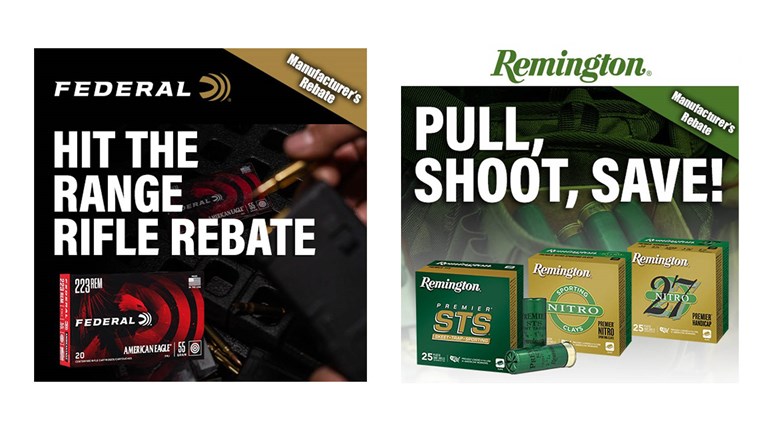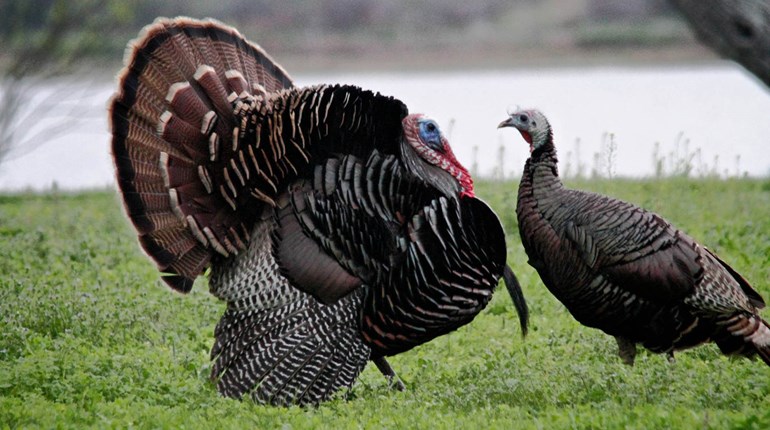
When the stage—be it an ammo shelf or a beachside balcony—is full of attractive choices, what wins the hearts of the crowd usually has the best combination of several pleasing qualities. Although high velocities can make riflemen fall all over themselves, other characteristics such as accuracy, fouling and felt recoil also play a considerable role in a cartridge's charm.
Today there are plenty of rounds vying for the attention of serious varmint shooters, and little bullets have gained a big following. Recently introduced pipsqueaks like Hornady's pair of .17-caliber rimfires and the .204 Ruger have cast a shadow of popularity eclipsing many larger cartridges. Not to be left in the dark, Remington has sparked a flame with a new centerfire round that sends its 20-grain bullet blazing from a bantam-sized bore at 4,000 feet per second. The .17 Remington Fireball may raise eyebrows and drop jaws with its velocity, but the cartridge has additional attributes that will turn heads, too.
Remington's second round to come from the factory with "Fireball" in its headstamp, the cartridge is a necked-down version of its .224-caliber predecessor, which has been around for more than 40 years. The equivocally named .221 Remington Fireball was introduced to silhouette shooters along with the XP-100 handgun in 1963. Chambered in the 10-inch-barreled, bolt-action single shot, the cartridge pushed a 50-grain bullet to more than 2,600 feet per second, resulting in a good deal more energy than the .357 Magnum, but with mild recoil. It was also accurate. Needless to say, silhouette shooters quickly became fans.
As wildcatters will with just about any new factory fodder, they promptly deemed the .221 Remington Fireball in need of tweaking. An obvious modification involved the caliber of bullet the case could handle, and Vern O'Brien, a gunsmith from Las Vegas, NV, made it work with a .172-inch bullet by necking down the brass and giving it a 30-degree shoulder. His .17 Mach IV wildcat loaded with a 25-grain bullet produced a muzzle velocity of about 3,850 feet per second. O'Brien built made-to-order rifles chambered in the cartridge starting in the mid-1960s, with other custom gunmakers soon doing the same. Enthusiasm for the .17 Mach IV made it a standout among mini-bore wildcats, and the .17 Remington Fireball closely follows its design.
For now, the sole .17 Remington Fireball factory load uses the 20-grain AccuTip-V bullet, which is pointed with polymer and has a thin jacket to guarantee explosive expansion on impact. However, look for a 25-grain hollow-point load in the near future. Remington currently chambers five rifles in the cartridge. Four are Model 700 variations, and the Model Seven CDL completes the lineup. Several days spent punching paper and shooting prairie dogs with one of the Model 700 derivatives and the Model Seven gave me a good look at the little round, and I liked what I saw.
From the 26-inch, heavy-contour barrel of the Model 700 SPS Varmint—a new version of the Model 700 SPS upgraded for pest and predator control but still carrying a reasonable price tag of less than $650—the .17 Remington Fireball repeatedly delivered muzzle velocities that were slightly higher than the factory-touted 4,000 foot-per-second mark. Paired with the Model Seven, which has a barrel of just 20 inches, the cartridge still managed to top 3,750 feet per second.
The 20-grain AccuTip-V leaving the muzzle at 4,000 feet per second gives the .17 Remington Fireball a trajectory that edges a .22-250 Remington's 55-grain bullet at 3,900 feet per second. With a 200-yard zero, the .17-caliber bullet drops 5.1 inches at 300 yards, while the .22-caliber bullet falls 6 inches. Notably, the .17 Remington Fireball needs just 20 grains of propellant to get this performance, in contrast to the 36-grain charge required by the .22-250. It's not only a matter of efficiency; a lighter bullet in front of a smaller charge produces less recoil. The recoil from the SPS Varmint, which weighed almost
10 1/2 pounds with a Swarovski riflescope onboard, was less than a single foot-pound. Recoil is something to consider when shooting a couple hundred rounds in a day, especially if you like to see bullet impact through your scope. What fun is varmint shooting if you can't? Hit the trigger on a rifle in .17 Remington Fireball, even the 6 1/2-pound Model Seven, and you get to see the whole show.
Naturally, shooters will want to compare the .17 Remington Fireball with the .17 Remington. Yes, the company's first .17-caliber cartridge is faster (by 250 feet per second), flatter (by about .7 inch at 300 yards) and more powerful (by roughly 100 foot-pounds at the muzzle). But there are those nagging issues of fouling and barrel erosion following it around. While some may say these aren't a problem with proper maintenance, I know more shooters who have sworn off the .17 Remington because of them. Again, varmint shooting is supposed to be fun, and I don't see that much joy in stopping the action every 15 or so shots to thoroughly scrub the bore.
My experiences with the .17 Remington Fireball, on the other hand, have been much more pleasant. Before I left for Wyoming to try the cartridge on prairie dogs, I could depend on the SPS Varmint to consistently deliver 100-yard groups of about 3/4 inch. With the Model Seven, five bullet holes usually were inside 11⁄8 inches. I easily put 200 rounds through each rifle during the two-day shoot and, in the name of arduous evaluation, never swabbed their bores. Though both rifles kept hitting the mark, prairie dogs are poor targets for assessing group size. I wanted measurements for comparison, so upon returning home I took the guns to the range. After all that firing, the SPS Varmint still put five bullets in 11⁄4 inches several times, and the Model Seven turned in groups that averaged just slightly more than 1 1/2 inches. So much for fouling being an issue with the .17 Remington Fireball.
One thing that does bother the round, though, is wind. Its lightweight bullet will fly wider in a moderate breeze than the heavier bullets of the .20- and .22-caliber centerfires. Wind is always a factor when shooting small targets at long ranges, and figuring out the correct hold is the varmint shooter's art. Just expect less margin for error with the little cartridge. Another drawback is the current cost of .17 Remington Fireball ammo. Part of the fun with the .17-caliber rimfires is high performance at a modest price. While the .17 Remington Fireball has ballistics that far surpass those of the rimfire rounds, the heat does not come as cheap. Remington is working on bringing the cost down, however, and value-priced boxes of the cartridge in bulk should soon show up on dealers' shelves. Handloaders, of course, can save some money by cranking out their own ammo, and components, dies and data are already available from several sources.
The .17 Remington Fireball neatly fills a niche that could make it very attractive to varmint shooters and predator hunters. It is not as loud as other centerfires in its velocity class, and the extremely fragile bullet is not likely to ricochet or cause undue damage to pelts. All are pluses when hunting around the suburbs or other developed areas that seem to harbor a growing population of foxes and coyotes. At 200 yards it has more than 350 foot-pounds of energy, which is plenty for these predators with proper shot placement. I've seen the cartridge make short work of prairie dogs past 500 yards, and I bet it will have the same effect on groundhogs. With its minimal recoil and short overall length, the .17 Remington Fireball in the Model Seven makes a perfect walking varmint rifle. Is there room for another cartridge that uses its velocity to appeal to shooters? Absolutely, especially when speed isn't the only thing going for it.
Shooting ResultsHot Performance: .17 Remington Fireball
| Rifle | Velocity | Group 1 | Group 2 | Group 3 | Group 4 | Group 5 | Average |
| Remington Model 700 SPS VarmintRemington Model Seven CDL | 4,0073,752 | 7/81 1/4 | 11/1615/16 | 5/81 1/8 | 3/411/16 | 11/161 1/8 | .721.10 |
| Velocity measured in feet per second for the average of 10 consecutive shots recorded by an Oehler Model 43 chronograph. Temperature: 80 degrees Fahrenheit. Accuracy measured in inches for five-shot groups fired from a sandbag rest at 100 yards.Load: 20-grain Remington AccuTip-V. | |||||||




































